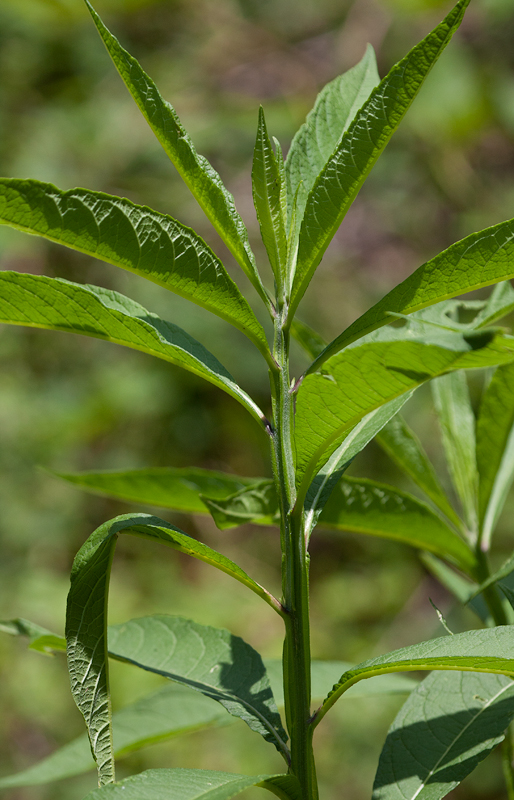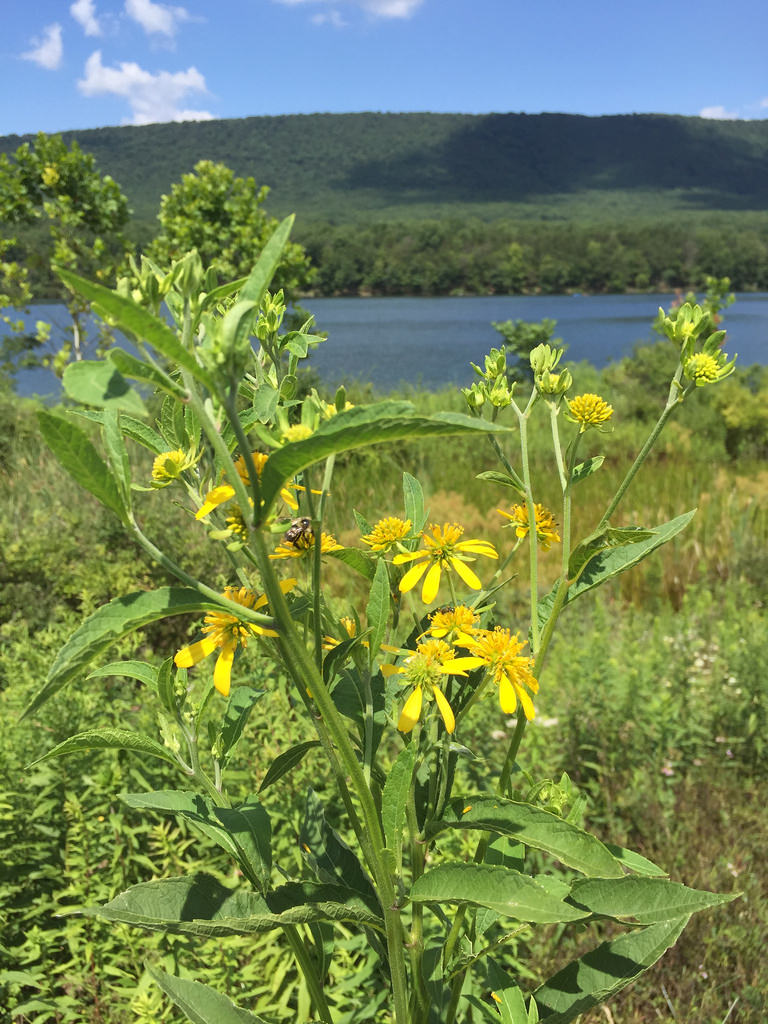Map Snapshot




















269 Records
Description
Compare Yellow Crownbeard which has broader opposite stem leaves.
Relationships
Host plant for the Gold Moth (Database of the World's Lepidopteran Hostplants). Host plant for Silvery Checkerspot.
Seasonality Snapshot
Source: Wikipedia
| Verbesina alternifolia | |
|---|---|

| |
| Wingstem in cultivation | |
| Scientific classification | |
| Kingdom: | Plantae |
| Clade: | Tracheophytes |
| Clade: | Angiosperms |
| Clade: | Eudicots |
| Clade: | Asterids |
| Order: | Asterales |
| Family: | Asteraceae |
| Genus: | Verbesina |
| Species: | V. alternifolia
|
| Binomial name | |
| Verbesina alternifolia Britton ex Kearney (L.)
| |
| Synonyms | |
| |
Verbesina alternifolia is a species of flowering plant in the family Asteraceae. It is commonly known as wingstem[2] or yellow ironweed.[3] It is native to North America.[2]
The name "wingstem" refers to the petioles of the leaves, which run down the stem and form raised ridges or "wings" along it.[4] The plant grows 3-8 feet tall with an unbranched stem until reaching the inflorescence at the very top.[5] Its yellow flower heads, which bloom in late summer through early fall, are 1-2 inches wide and consist of up to 10 bright yellow ray florets that are angled downward, each bearing a notch at the end, as well as a spherical cluster of tubular yellow disk florets in the center.[6]
Ecology
[edit]This plant grows in fertile, moist low-lying areas, such as near creeks and in open bottomland woods, usually not far from a body of water or woodland.[5][7] The tubular disk florets in the center of every flower head attract long-tongued bees such as bumblebees and butterflies, while being less attractive to shorter-tongued insects like wasps and flies.[5]
Verbesina alternifolia is sometimes considered weedy.[8] It thrives and competes well in both disturbed and less disturbed habitats, and often forms colonies by spreading vegetatively from rhizomes.
The seeds are attractive food for birds.[9] The foliage is not preferred food by deer and other herbivores.[5][10]
As host plant
[edit]It is a larval host to the gold moth (Basilodes pepita) and the silvery checkerspot (Chlosyne nycteis).[11]
-
Close-up of Verbesina alternifolia stem showing wings
-
Mature flower heads
-
Detail of immature seed head
References
[edit]- ^ NatureServe (1 September 2023). "Verbesina alternifolia". NatureServe Network Biodiversity Location Data accessed through NatureServe Explorer. Arlington, Virginia: NatureServe. Retrieved 20 September 2023.
- ^ a b NRCS. "Verbesina alternifolia". PLANTS Database. United States Department of Agriculture (USDA). Retrieved 2018-04-07.
- ^ "Verbesina alternifolia - Plant Finder". www.missouribotanicalgarden.org. Missouri Botanical Garden. Retrieved 18 January 2019.
- ^ "Us Wildflower- Wingstem, Yellow Ironweed". uswildflowers.com.
- ^ a b c d Hilty, John (2020). "Wingstem (Verbesina alternifolia)". Illinois Wildflowers. Retrieved 21 September 2023.
- ^ "Know Your Natives- Yellow wingstem". anps.org. Arkansas Native Plant Society. 13 November 2015.
- ^ Carter, Richard; Morris, M. Wayne; Bryson, Charles T. (1990). "Some Rare or Otherwise Interesting Vascular Plants from the Delta Region of Mississippi". Castanea. 55 (1): 43.
- ^ "Verbesina alternifolia". missouribotanicalgarden.org.
- ^ "Verbesina alternifolia". missouribotanicalgarden.org.
- ^ "Know Your Natives- Yellow wingstem". anps.org. Arkansas Native Plant Society. 13 November 2015.
- ^ The Xerces Society (2016), Gardening for Butterflies: How You Can Attract and Protect Beautiful, Beneficial Insects, Timber Press.





















